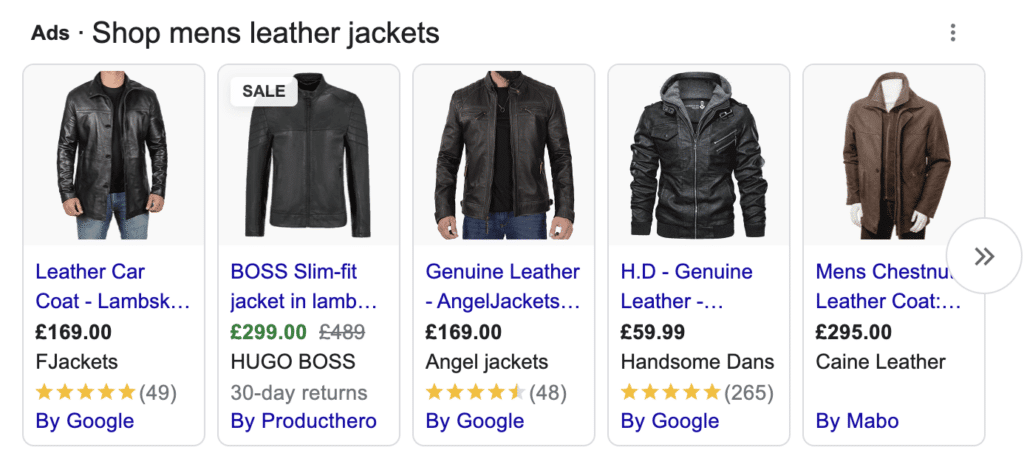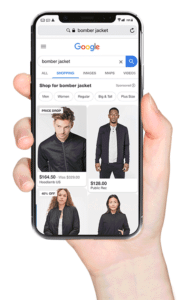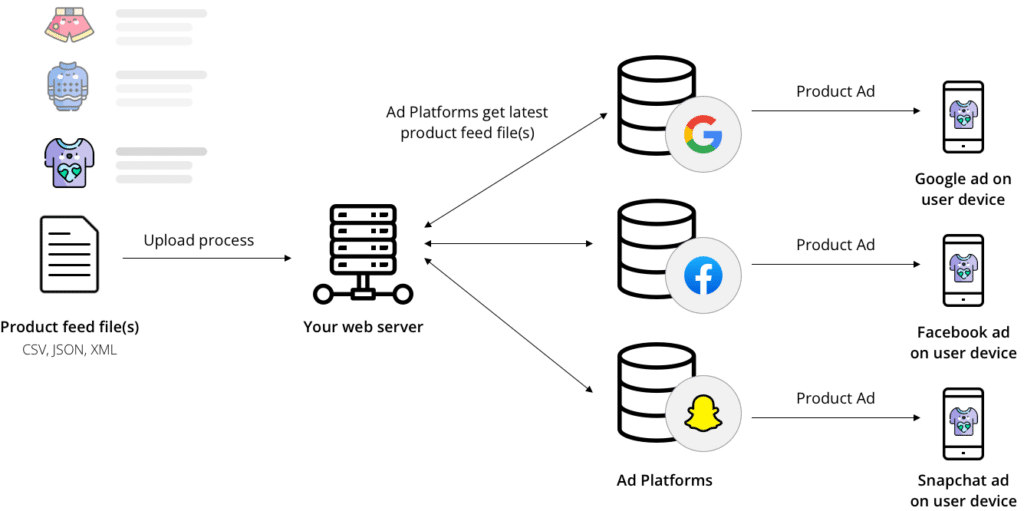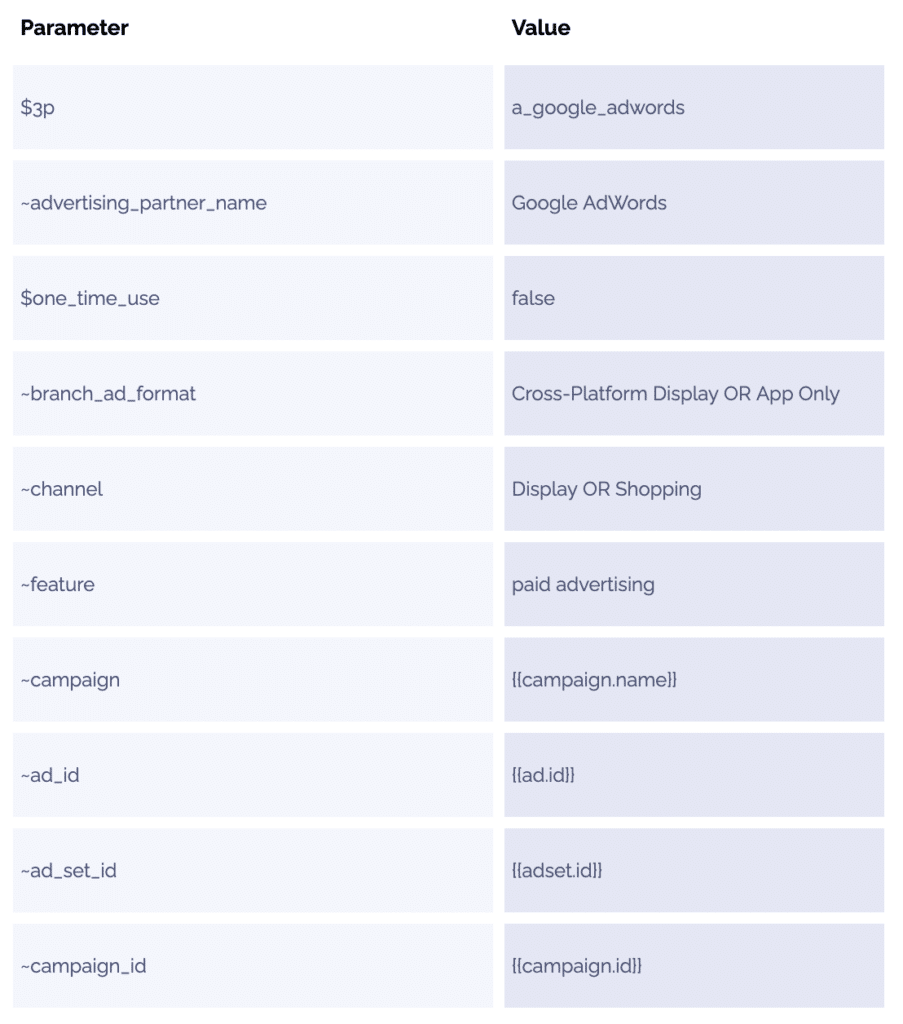The basics
The product feed is a way your ecommerce store communicates with an ad platform to display product listing ads. Product listing ads are simply snapshots of your products; there are no videos, no creative, no copy. They simply display a photo of your product along with a description, price, the name of your brand, and sometimes a user rating as well. Ad platforms that support product feeds include Google, Amazon, and eBay.
By using product feeds, retailers can place their products directly in front of users who are searching for a specific product, resulting in high conversion rates for ecommerce brands.
The impact of product feeds
Product feeds in Google are part of the Google Shopping experience, and this represents a huge opportunity for ecommerce brands. Here are some statistics that prove the use case:
- 85.3% of Google’s paid clicks are generated on AdWords and Google Shopping
- Shopping ads in the US drive 76.4% of retail search spend
- Google Shopping ads in the UK amounts to 82% of retail spend
These incredible metrics aren’t exclusive to Google, though. HostelWorld benefitted from a 44% increase in their click-through rate by leveraging Facebook Dynamic Product Ads and saw their cost per acquisition decrease by 3x.
Additionally, affiliate marketing drove 16% of ecommerce sales in the U.S. and Canada, and the average return on ad spending (ROAS) was 12:1 across all industries, which means each $1 spent on the affiliate channel drove an average of $12 in ecommerce revenue.
Alongside Facebook and Google, there are many other sites which utilize product feeds to help you promote your products to a wider audience. A small selection of some of the more well known brands are listed below:
- Amazon
- Bing
- eBay
- Price Runner
- Snapchat
- TikTok
All types of brands that sell online should be focused on this important and growing channel for marketing their products and driving sales.
How does a product feed work
The product feed can be created in a variety of formats, but typically it will be in a CSV or XML format. You can create this list from your product catalog using spreadsheet software and output the results as a CSV file (or whatever format the ad platform requires). From there, you want to place your product feed file in a location where it can be accessed by the ad platforms. This typically involves uploading your product feed file to a web server — this is usually done using your CMS but check with your IT team for the best approach.
Once the product feed has been uploaded, you can let the ad platforms know it’s available by giving them the path to the file. They will scan your site for it and ingest all products from your feed. The products within your feed then get added to the various ad platforms and they can begin showing your products to users. These product ads will directly link users to your app where they can go through the checkout process and Branch can attribute these conversions back to your original campaign.
The diagram illustrates how this process works.
What makes a good product feed
Now we’ve discussed why you’d want to use product feeds, let’s dive into what makes a good and effective product feed. Here are some points to consider:
- Ensure your product descriptions are SEO friendly so that the search engine picks up the products from your feed for users’ search words.
- Consider using an off-the-shelf product to manage your data feed. Ease of use and automated feed optimization are just two of the benefits of using a third party tool to assist with your product feed management.
- If you do decide to use an off-the-shelf product to manage your data feed, use one tool for this rather than multiple tools to prevent any cross posting or communication errors between yourself and the ad platform.
- Add as much detail as possible to ensure relevant results are surfaced in the ad platform, which will increase the likelihood of a purchase conversion.
- Use high-quality imagery to ensure your products look visually appealing to potential customers and to encourage clicks and potential purchases.
- Incorporate Branch links into your product feed to ensure traffic is diverted to your best channel for conversions — your mobile app. Mobile apps have a staggering 20x higher conversion rate compared with mobile web and the overall basket spend increases within mobile as well. Using Branch links in your feed is a great way of optimizing your conversion success rate and revenue.
- Keep your data fresh! When your product details change, make sure the updates are reflected in your product feed to ensure people get all the right information in the ad before they land in your store.
Keep an eye on your results
Measure, assess, repeat! It’s important to analyze where your users are coming from so you can assess your most profitable channels of engagement. For ecommerce clients, product feeds are sure to be among the top performing channels for conversions due to the high intent of customers searching specifically for the products you’re selling. Could product feeds become your most profitable channel?
Deep linking directly to your products
The power of deep linking directly to products within your mobile app means that consumers can get to your products directly, without having to go via an additional product search or via a homepage. With Branch, you can even deep link users to your product even if they don’t have your app and have to go through an install process first. In order to ensure deep links work in your product feed, you will need to amend your feed to contain Branch links for each and every product. In addition, by using deep linking, you’ll be able to track purchases against your product feed campaigns for complete visibility over channel performance.
How to construct a product feed with a Branch link
Firstly, it’s recommended that your app makes use a canonical URL* to direct users directly to the products in your app; this is a best practice setup for deep linking with Branch. This is a good approach for retailers that have parity between their ecommerce website and their mobile app as it makes it easy for marketing professionals to manage deep link setup. All ad partners need the $canonical_url= parameter to be added and dynamically populated by the product URL value.
*This assumes you have both a website and a mobile app and all your products are displayed on both your website and your app.
Only Facebook and non-SANs need the $fallback_url= parameter for graceful web fallback in case the app is not available. With Branch, it is possible to send users to the App Store and Play Store if they do not have your app installed, but typically in this instance it’s preferable to send users to the web so as not to disrupt the checkout process. In this situation, our Journeys smart banners can help drive users to the app where they can continue with their purchase.
Here are some prerequisites for setting up your product feed to work with Branch links:
- Branch SDK
- Branch Web SDK
- Deep Link Routing set up in your Branch dashboard
- Facebook and/or Google Ads integrations enabled in your Branch Dashboard
- Link per product feed item
Here are some instructions on constructing product feed links by using Branch links combined with your product URL links, for various ad platforms:
[BRANCH LINK]&$canonical_url=[ENCODED PRODUCT URL]&$fallback_url=[ENCODED PRODUCT URL]
Google Ads
Native Universal Link / App Links
- Branch Link in feed not required (FOR FINAL URL)
Place Branch link in Tracking Template for Web Attribution
Non-SANs
[BRANCH LINK]&$canonical_url=[ENCODED PRODUCT URL]&$fallback_url=[ENCODED PRODUCT URL]
Each network relies on a different method for linking app users from their platform to your brand’s product pages. Fortunately, Branch automatically handles this on your behalf meaning Branch links work seamlessly cross-platform. Whilst Facebook uses Facebook App Links, Google uses Native Universal Links, and non-SAN’s rely specifically on Branch links. Branch is able to handle all of these use cases for deep linking and attribution.
For more information on integrating Branch links with your product feed, please consult our Help documentation.
Adding analytics parameters to your links
Analytics parameters can be dynamically added to your product feed links and these can be set up to capture all the required information. You can continue to use your own base UTMs on the links you generate and Branch will ingest and remap them to our own analytics tags.
Below is a table showing an example of Google parameters, but these can apply to other ad networks. Please check the Branch documentation for more information on using analytics parameters within product feeds.
Summary
Product feeds are vitally important to ensuring your ecommerce business capitalizes on the best channels available to you as a marketer. When utilizing product feeds, Branch provides a distinct advantage by providing effective campaign measurement alongside best-in-class in-app deep linking user experiences. Your mobile app is your most powerful channel for driving sales both in terms of volume and value, and product feeds can play an integral role in driving in-app sales. Implementing a successful product feed will require some setup, but once done, it’s a great marketing method for achieving maximum visibility of your products to high-intent customers.
If you’re interested in finding out more about how Branch can help you measure performance and provide a robust linking infrastructure for your product feeds, please reach out to one of our Branch representatives today.


























